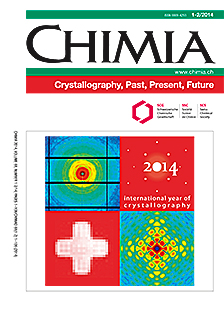Complex Hydrides – When Powder Diffraction needs Help
DOI:
https://doi.org/10.2533/chimia.2014.38Keywords:
Complex hydride &dot, Hydrogen storage &dot, Powder diffraction &dot, In situ studiesAbstract
'Real life' energy-related materials such as solid-state hydrogen storage compounds or components of electrochemical cells are usually polycrystalline, poorly crystallized, highly reactive and dynamic systems. Powder diffraction at modern high brilliance X-ray sources is the most useful tool to investigate such systems because it is easy, fast and extremely versatile with respect to measurement conditions as well as in situ setups. However, it is in the nature of these systems that they undergo processes that cannot be investigated by diffraction alone. The central role in hydrogen storage materials is played by hydrogen itself, the worst X-ray scatterer in the periodic system. Gas release, the purpose of a hydrogen storage material, is not detected by diffraction. Amorphous components are badly characterized. We want to show how a complementary approach combining different methods allows to overcome limitations imposed on powder diffraction by the sample nature of 'real' hydrogen storage materials.Downloads
Published
2014-02-26
Issue
Section
Scientific Articles
License
Copyright (c) 2014 Swiss Chemical Society

This work is licensed under a Creative Commons Attribution-NonCommercial 4.0 International License.
How to Cite
[1]
Chimia 2014, 68, 38, DOI: 10.2533/chimia.2014.38.







